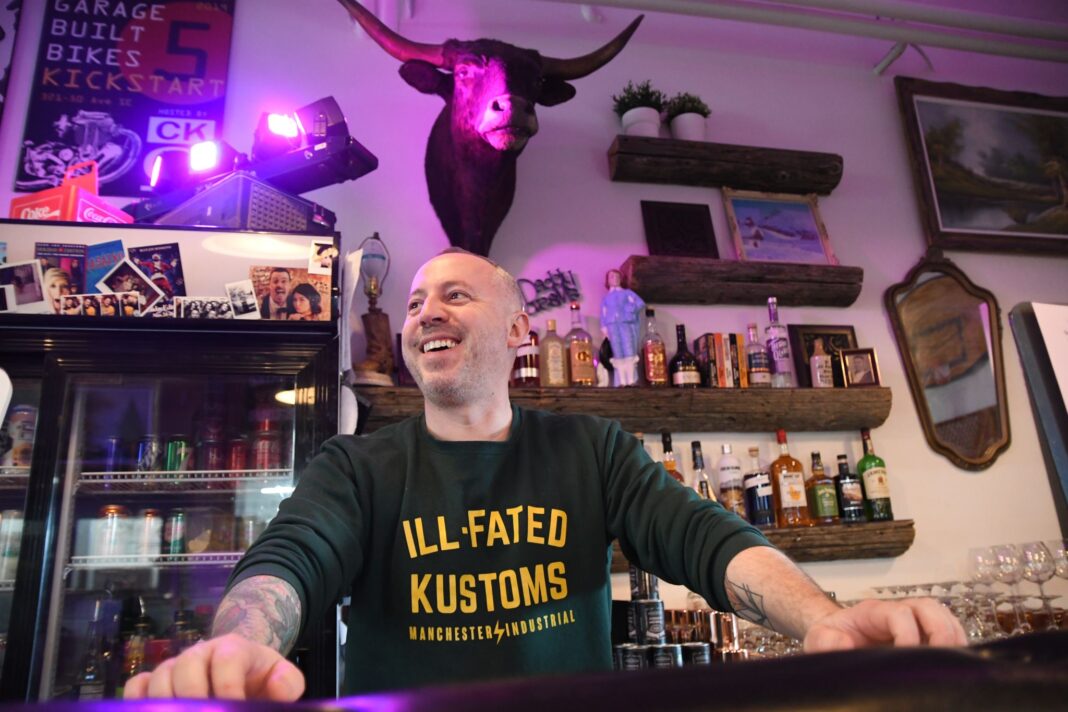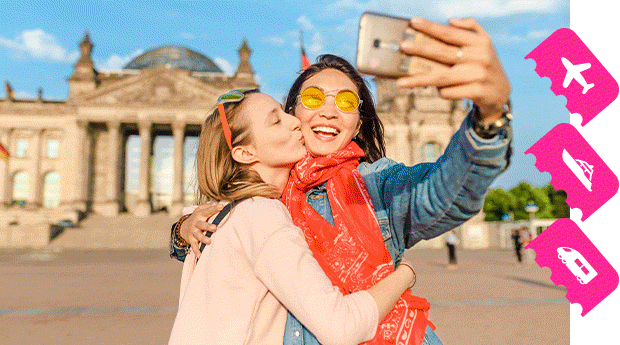Dan Clapson wants the rest of Canada—and the world—to realize what he has known for some time.
“Give the Prairies a chance, that is what I’ve been saying, what a lot of people have been saying for a long time,” says Clapson, an openly gay award-winning food writer, event promoter and co-author of the best-selling cookbook Prairie: Seasonal, Farm-Fresh Recipes Celebrating the Canadian Prairies. “We know we are cool; we don’t have to prove that to other people.”
And that cool also means a bit queer.
A region of central Canada that encompasses the provinces of Manitoba and landlocked Saskatchewan and Alberta, the Prairies are known (to eastern Canadians at least) for being a flat stretch of the country covered in bright yellow canola fields. It is what you drive past—presumably as fast as possible—on your way from the Great Lakes in the east to the Rocky Mountains in the west.
Clapson has his work cut out for him. The Prairies can be more conservative than other parts of Canada. Saskatchewan, for example, has passed a bill requiring students to get parental consent before they can change their pronouns at school. The premier of neighbouring Alberta, Danielle Smith, wants to follow Saskatchewan’s lead, then go further by prohibiting hormonal treatment, puberty blockers and gender-affirming surgery for children under 15 in legislation she intends to introduce later in 2024.
But Clapson says these political actions don’t reflect the whole picture when it comes to LGBTQ2S+ life on the Prairies. A lifelong Prairie resident, he grew up in Saskatoon, Saskatchewan, and has lived and spent time in the region’s largest cities—Edmonton, Saskatoon, Winnipeg and his current home, Calgary, Alberta. As well as writing articles, reviews and Prairie, he is the creator of Eat North, a website that tells the stories of Canada’s food scene and the people behind it. He also operates The Prairie Emporium (334 53 Ave. S.E., Calgary, Alberta), a multi-use space in Calgary’s Barley Belt, an area of the city that is home to several breweries.
“It is a very queer-friendly space,” Clapson says. “It’s not officially a gay bar, but we do joke that we are unofficially a gay bar.” The spot is probably best known for its live music series, Blue Jay Sessions, which showcases songwriters with an inclusive attitude, as well as its drag and queer events. “I like to incorporate a drag queen into many things. When we have a chef-hosted dinner, we might have a drag queen emcee the event, or when we have songwriter events, one of the sessions will have a drag performer or musician in the mix.”
In fact, the Blue Jay Sessions, which was launched in 2019, is the only queer-operated event series in Canadian country music and has garnered three Canadian Country Music Award nominations and won a 2022 Country Music Alberta Award.
Clapson took some time away from his work at the Prairie Emporium to sit down with Pink Ticket Travel to discuss what he loves about the Prairies.
What was the queer scene like when he was growing up?
I’m nearly 40 now, but when I moved to Calgary from Saskatoon in my 20s, I actually felt like the Saskatoon queer scene was more advanced. It felt more community-minded. At the time, Calgary Pride (August 31 and September 1, 2024) was short, it was just like a day or a half-day. But Saskatoon Pride (June 14 to 23, 2024) was a multi-day event, so Calgary felt a little backwards in comparison. A lot of places in Calgary have evolved over the years. There are lots of breweries in town that are really queer friendly. I feel like there are a lot of venues—not gay bars—that do queer programming and support the community. During the pandemic, a lot of people here chose to be either shittier people or better people, and I feel like a lot of spaces just stepped up to be more inclusive.
What is the scene like today?
It really depends on which city you are in. Edmonton has a lot queer-friendly spaces. In terms of LGBTQ2S+-specific nightlife, it is minimal, but there is a lot queer-programming taking place in restaurants, bars, breweries and distilleries across the city. Campio Brewing Co. (10257 105 St. N.W., Edmonton, Alberta.) does a drag brunch, and Felice Cafe (10930 84 St. N.W., Edmonton, Alberta) offers a mix of queer-leaning arts programming.
Winnipeg I am always impressed with. It is super-diverse anyway, as it has the largest population of Indigenous people in a major city in Canada. It is also home to Synonym Art Consultation (230 Main St., No. 307, Winnipeg, Manitoba), which puts on large-scale drag events and works with queer artists from across Canada. So there is always something going on when it comes to the queer community there.
I don’t know if this is true, but I’ve heard that Calgary actually has the most restaurants, venues and bars with drag entertainment in the entire country—there are just more options in Calgary than in any other city. The Attic Bar & Stage (1413 9 Ave. S.E., Calgary, Alberta) does a drag show every Saturday and has queer stand-up comedy nights. Modern Love (613 11 Ave. S.W., Calgary, Alberta), Sweet Loretta Bar (715 11 Ave. S.W., Calgary, Alberta) and National on 17th (550 17 Ave. S.W., Calgary, Alberta) all host drag brunches. My friends and I joke that there is a RuPaul’s Drag Race queen there three times a week with the amount of drag queens that come through the city—Season 15 winner Sasha Colby was just here, and Marina Summers also came through. It has made Calgary’s drag scene definitely top notch. I think Calgary is for sure becoming a major drag destination.
What are some must-do activities?
I would strongly encourage people to go to Winnipeg, especially in the summer when it is really beautiful. They have tons of historic brick buildings downtown from the early 1900s, and I don’t think people realize how big the city is. The Winnipeg Art Gallery (300 Memorial Blvd., Winnipeg, Manitoba) is really stunning and recently built a huge addition to house Inuit artwork. It is a multi-level space and striking to walk into. The Canadian Museum for Human Rights (85 Israel Asper Way, Winnipeg, Manitoba) is also amazing. It carries a lot of heavy history, so I don’t expect an upbeat museum experience when I go, but it is impactful and reminds you of all the injustices that have happened in Canada.
In Saskatoon, the Remai Modern (102 Spadina Crescent E., Saskatoon, Saskatchewan) is the main art gallery downtown—it focuses on Indigenous artists. There is also an amazing restaurant inside called Hearth.
The annual Calgary Stampede (July 5 to 14, 2024) is a love-it-or-hate-it event. It depends on who you ask. But it has changed a lot, and there is now a lot of queer programming. There is usually a drag event every single day and multiple drag brunches on weekends. You also get to experience true cowboy culture—steering, roping, rodeo events. In terms of western fashion and clothing, it is quite fun.
Where should people go on a day trip?
I love Clear Lake, located near the south gate of Riding Mountain National Park (135 Wasagaming Dr., Onanole, Manitoba), which is a three-hour drive west of Winnipeg. It’s a popular spot for swimming and has sandy beaches. Saskatchewan is, like, a land of lakes, too. Just drive 20 minutes outside of Saskatoon, and you’ll come to some really nice beach areas along the South Saskatchewan River.
Oftentimes people will come to Calgary, and they’ll drive west to Canmore or Banff in the Rocky Mountains. But they never go the other direction. If you do go that way, your jaw will drop to the floor. It is unreal. Drumheller is about an hour-and-a-half drive from Calgary to the east and is one of my favourite places to go. It’s home to hoodoos—sandstone pillars with rock caps that rise up from the landscape—and also the dinosaur bones at the Royal Tyrrell Museum (1500 N. Dinosaur Trail, Drumheller, Alberta). It is a quirky place—there is nothing quite like it visually in the world.
Where should someone go for weekend brunch?
I think the best brunch place in all of Canada is in Winnipeg, at a place called Clementine Café (123 Princess St., Winnipeg, Manitoba). It’s delicious all the time, and it has thoughtful plates of food, great coffee and great cocktails.
There is also OEB Breakfast Co. (825 1st Ave. N.E., No. 110 222 5 Ave. S.W., 2207 4 St. S.W., and 4132 University Ave. N.W., Calgary, Alberta). The Calgary-based company opened in 2009 and has now expanded across Canada, but you can still go to one of the locations in the city.
The River Café (25 Prince’s Island Park S.W., Calgary, Alberta) also has an amazing brunch. For a casual bite, the First Street Market: Food Hall & Bar (1327 1 St. S.W., Calgary, Alberta) is an option, too.
What about a queer-friendly night out?
Calgary has a population of 1.6 million people now—it is a lot bigger than every other Prairie city—and you really do feel that when it comes to the nightlife, especially on a Thursday, Friday or Saturday night. Calgary consistently has some of the most top-rated bars and pubs, like cocktail bar Proof (1302 1 St. S.W., Calgary, Alberta); Paper Lantern (115 2 Ave. S.E., Basement, Calgary, Alberta), which is a Vietnamese tiki bar in Chinatown; and The Ship & Anchor (534 17 Ave. S.W., Calgary, Alberta.), which hosts all kinds of drag shows and usually makes Canada’s 50 best bar lists.
Why do you like about living on the Prairies?
I really love the Prairies, and I am proud of a lot of things that go on here. It is never going to be a bustling metropolis like Toronto or Montreal, but Calgary is much like Vancouver these days. When you go to Vancouver, it actually feels smaller than Calgary. But none of Prairie cities have a gay neighbourhood. So pull that out of the equation.
This interview has been edited for length and clarity.


